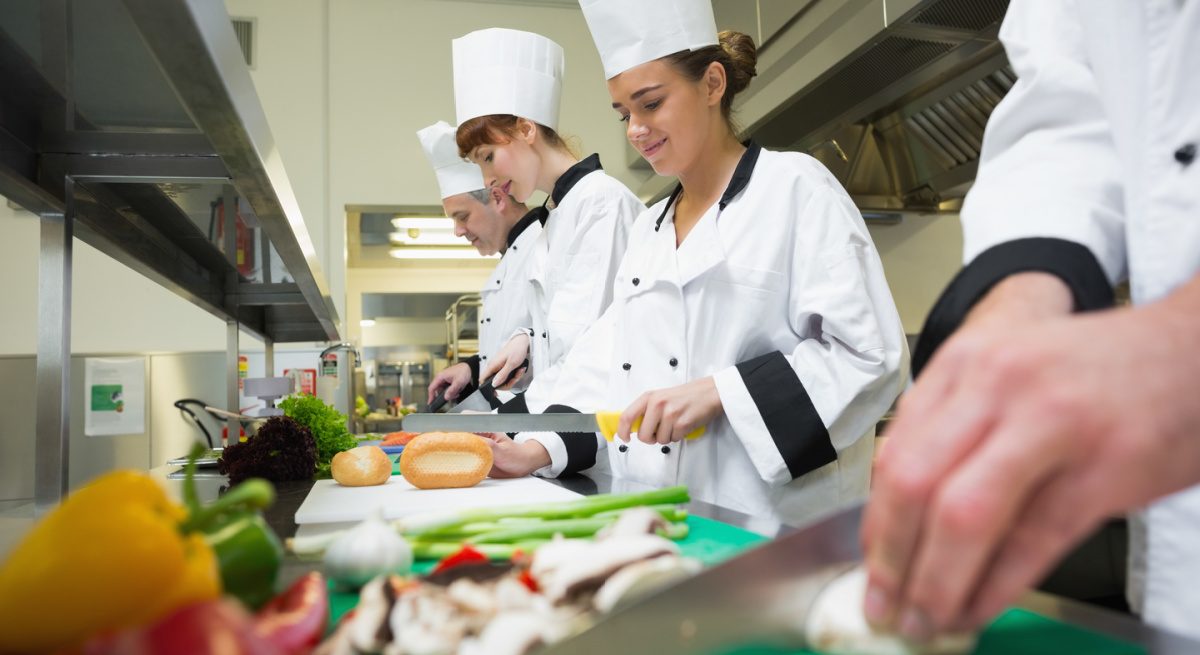Six Trends to Expect from Back of House in 2022
3 Min Read By Greg Staley
It’s no secret that the restaurant industry has changed dramatically in the last two years. COVID has upended the way the industry operates, shifting everything from the way we serve guests to how sanitation works to what the supply chain and labor market look like. Although the pandemic will continue to change how we navigate the restaurant industry moving forward, many operators are looking to find their new normal and begin proactively investing in their success again.
Trends that accelerated because of COVID and new trends emerging out of the pandemic will begin changing the face of restaurant technology. Operators are moving toward adoption of new technologies, especially ones that will help them navigate the labor and supply chain issues they face, as well as focusing on the ongoing push toward off premise dining.
Here are six things you can expect to see in back-of-house tech in 2022.
1. Expanding the Tech Stack
Pre-pandemic, restaurants were already beginning to move more toward digital technology to better address guest wants and needs. However, BOH technology has long been at the bottom of the list for many operators. After adopting better delivery and takeout technology in 2020, restaurants are now turning their tech budgets toward bringing in back of house.
Back-of-house technology, for those who had it in place, has been helping restaurants manage disruptions in their supply chain, implementing new sanitation protocols, training and onboarding new employees, and making better use of their labor. We expect to see more operators investing in back-of-house as they fully flesh out their tech stack.
2. Better Integrations with Other Technology
Part of this move toward more technology and better technology is driven by the need to have more visibility into the daily operations of each location. Data is driving the decisions of forward-looking restaurant brands, and those who have strong data are quickly differentiating themselves in a competitive market.
As restaurants look for better, more holistic data, they are demanding good integrations between their technology vendors. This will provide more reliable data, and information that is easier to parse and act on.
3. Move to Mobile
Restaurant employees are used to managing their lives on their phones and have increasingly been managing their work on their phones, as well. An app for things like scheduling, clocking, inventory, and checklists is becoming more popular and giving restaurants a competitive edge in a tight labor market. Additionally, restaurants are moving away from bulky, out of date desktop computers in favor of streamlined apps to help them better manage work both in the restaurant and on the go.
4. Addressing Labor
Almost every industry is struggling with the current labor shortage, and restaurants are no exception. Different operators are finding various solutions to recruiting issues, and many are looking for other ways to help manage labor costs until the market becomes more normalized.
This includes things like clocking enforcement, which is managed by the back-of-house. Our internal research has shown up to 20 percent of restaurant employees will clock in early without any restrictions in place, so some operators have begun restricting clock in time to no more than five minutes ahead of an employee’s scheduled shift as one way to help manage labor costs.
5. New Focus on Wellness
No matter what happens with COVID and its many variants, the tools that restaurants were using for wellness checks and improving employee health, will be repurposed with a new focus on wellness moving forward. Restaurants will continue to follow guest preferences for better sanitation and wellness protocols. So, whether it’s more frequent cleaning, broader based wellness assessments, or other digital wellness solutions, we expect to see those adapted and still used in coming years.
6. Ghost Kitchens
The move toward off premise dining was already on the rise prior to COVID, and, although dine in is coming back, the trend toward delivery and takeout is not dead. Whether it’s new restaurants looking to capitalize on the trend while minimizing startup costs, or existing brands finding ways to meet customer demand, ghost kitchens are here to stay.
Operators who have a strong tech stack in place will be using their back-of-house to help streamline operations in their ghost kitchens as well. Front of house tools will take a backseat in ghost kitchens while BOH will continue to manage inventory, purchasing, scheduling, recipe costing, and more.
The restaurant industry will continue to adjust, as we meet evolving challenges from the pandemic. But forward-thinking restaurant operators will be looking for ways to differentiate themselves from the competition, and back of house provides opportunities to do so.


